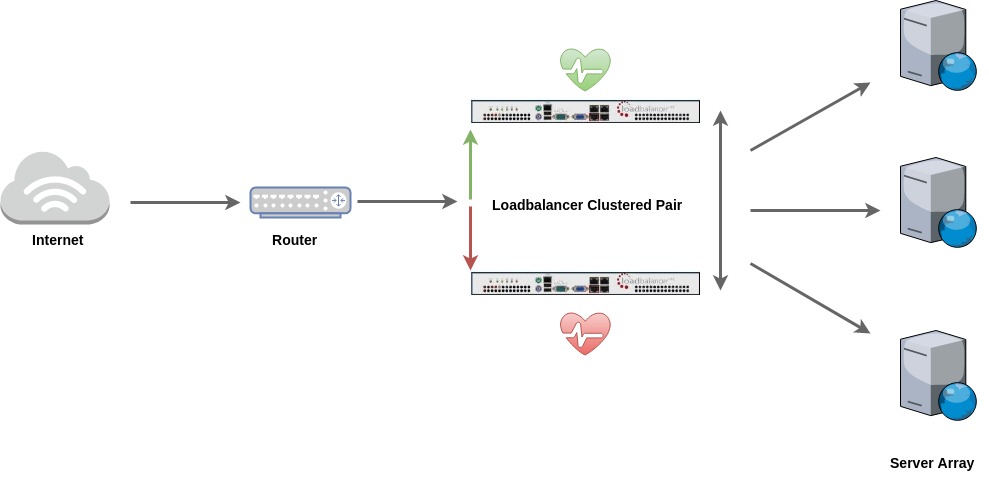
I dream of a world where people stop calling a link balancer a load balancer — because we don't sell link balancers!
And I'm sure that the team at Mushroom Networks have the same dream — because they don't sell load balancers!
Terminology can be a tricky thing. In this blog, I'll attempt to clarify the difference between load balancing (for application servers) and link balancing (for network connections).
What is load balancing?
Load balancing is a way to distribute traffic coming from the internet to a server. It works by having a Virtual IP (VIP) in front of real servers with IPs (RIPs). The load balancer is the VIP and behind the VIP is a series of real servers. The VIP then chooses which RIP to send the traffic to depending on different variables, such as server load and if the real server is up.
The purpose of a load balancer is to share traffic between servers so that none of them get overwhelmed with traffic and break. This ensures the availability, performance and maintainability of server based applications.
This network diagram shows a typical load balanced deployment:

OK... so what's link balancing?
Link balancing, on the other hand, is a completely different beast!
Link balancing is designed to balance the load between the local area network (LAN) and the Internet. A link balancer is usually positioned between the LAN and the WAN (Wide Area Network).
A link balancer uses traffic management algorithms to make sure that each link is being used to the best of its ability. It can potentially work out the fastest route for the information by taking into account which ISP link has the most bandwidth available.
A typical use would be to combine multiple Internet links to increase the aggregate available bandwidth, performance and redundancy. The link balancer directs traffic by using algorithms to determine which router and ISP has the most available bandwidth.
Below is a diagram showing how users go through a link balancer, which chooses the best router and ISP in order to connect them to the internet.

Spot the difference
Link balancers and load balancers do similar jobs. They calculate the best place to send the user, which helps increase efficiency and speed without crashing the server or router.
So in short:
Load balancing controls traffic from the internet and distributes that traffic to the best available server.
Link balancing distributes requests from the LAN across multiple Internet links and guides traffic to the best available destination.

















